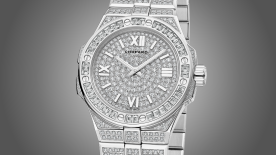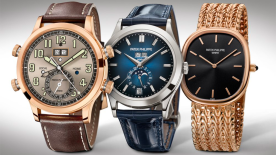“ It’s so much darker when a light goes out than it would have been if it had never shone.” This John Steinbeck quote from the American author’s last novel offers one explanation for the warm reception given to Tudor’s two dive watches — the Heritage Black Bay and the Pelagos — following their 2012 launch. After all, Tudor’s Submariners, the same term its more popular elder sibling Rolex first coined for its dive watches, were noticeably absent for more than a decade, having vanished just before the dawn of the new millennium after making their last appearance in the brand’s 1999 catalogue. According to Tudor, the Black Bay is a tribute to the brand’s historical dive watches, whereas the Pelagos represents a fusion of technology and innovation for its dive watches. While the Submariner term has been dropped for Tudor’s contemporary dive watches, emotional appeal has not been lost on the Black Bay and Pelagos because it stems not only from the brand’s diving tool legacy, but also from design elements inspired by and retained from past models.
The face of the Heritage Black Bay for example, harks back to the brand’s very first dive watch: Tudor’s 1954 Oyster Prince Submariner reference 7922 featuring eight round hour-markers, three rectangular hour-markers at 3, 6 and 9 o’clock and an arrow or triangular reference hour-marker for 12 o’clock. In other words, a dial similar to Rolex Submariners. Tudor’s reference 7922 has no crown guards and is equipped with a self-winding movement.
For those familiar with the Black Bay and Pelagos, the prominent “snowflake” hours hand will immediately come to mind. While it is indeed a defining design aesthetic and hits the sweet spot, the “snowflake” hours hand is actually paired with a “snowflake” sweep seconds hand. Tudor’s winning hand — pun intended — for its dive watches is the result of a combination of factors and that includes stylistic elements coupled with the brand’s history of diving watches.
In the first place, “snowflake” was the nickname given to the dials of Tudor’s Submariner references 7016 and 7021 of 1968 by collectors of that era and not because of the stylised hour hand per se. The “snowflake” dial features unique oversized square and rectangular hour-markers and a large triangular hour-marker at 12 o’clock. Coupled with the stylised hour and sweep seconds hands, the overall resemblance to snowflakes gave rise to this moniker. While snowflakes generally have a six-fold radial symmetry, these are the perfect ones we are mostly bombarded with visually; snowflakes can actually take on different forms. The unique design of the dial and hands was to differentiate Tudor’s dive watches from those of Rolex, thereby creating the brand’s own identity.

At your service
Secondly, Tudor Submariners produced prior to 1968 did not have the “snowflake” hour and sweep seconds hands which is a balanced design fit on contemporary Black Bay models and represents an inherent feature of this collection. The “snowflake” hour and sweep seconds hands were also incorporated into the Tudor Submariner reference 94010 with a dial similar in style to that of the Rolex Submariner during the 1970s.
On the other hand, the Pelagos is more closely aligned with the Tudor Submariner “snowflake” reference 7021 of 1968 with a date display at 3 o’clock. The Tudor Submariner “snowflake” model reference 7016 did not have a date display.
What is noteworthy is the almost 70-year legacy of Tudor Submariners and the fact that they were supplied to divers of the Marine nationale (French Navy), the United States Navy and various other military units around the world, a testament to the robustness and water-resistance of these dive watches. It is said that the Tudor Submariner was the official watch of the Marine nationale from 1974 to 1985. Interestingly, such military-issue watches were ordered directly from Tudor’s catalogue without any modifications.
Pelagos is a Latin word that is derived from ancient Greek and means “deep sea”, an apt name for Tudor’s namesake model as it is water-resistant to 500 metres or 1,640 feet and is even equipped with a helium valve placed at 9 o’clock on the titanium case. What is truly wonderful about the Pelagos is its balanced style and technical execution. While retrophiles and sentimentalists alike will be pleased with the historical design codes of the dial and hands, right down to the 60-minute or 60-click unidirectional rotatable bezel with a ceramic disc and the diving scale featuring one-minute sub-divisions from zero to 15, modernists will be pleased with its design architecture. The Pelagos offers a higher slick factor than the Black Bay in terms of wearability.
As for technology and innovation, the titanium bracelet’s folding steel clasp is equipped with Tudor’s patented spring-loaded self-adjusting mechanism which adjusts itself during dives, contracting in deep water as the diving suit is compressed and expanding when pressure drops during ascent. The first-generation Pelagos was powered by ETA 2824 automatic movements, but subsequent models house the chronometer-certified in-house Manufacture Calibre 5612 self-winding ones.
Tudor’s dive watches have lit the way for the brand over the past decade and its brilliance is not expected to dim in the foreseeable future.
This year GMT Magazine and WorldTempus have embarked on the ambitious project of summarising the divers watch since 2000 in The Millennium Watch Book - Divers watch, a big, beautifully laid out coffee table book. This article is an extract. The Millennium Watch Book - Divers watch is available in both French and English here:




